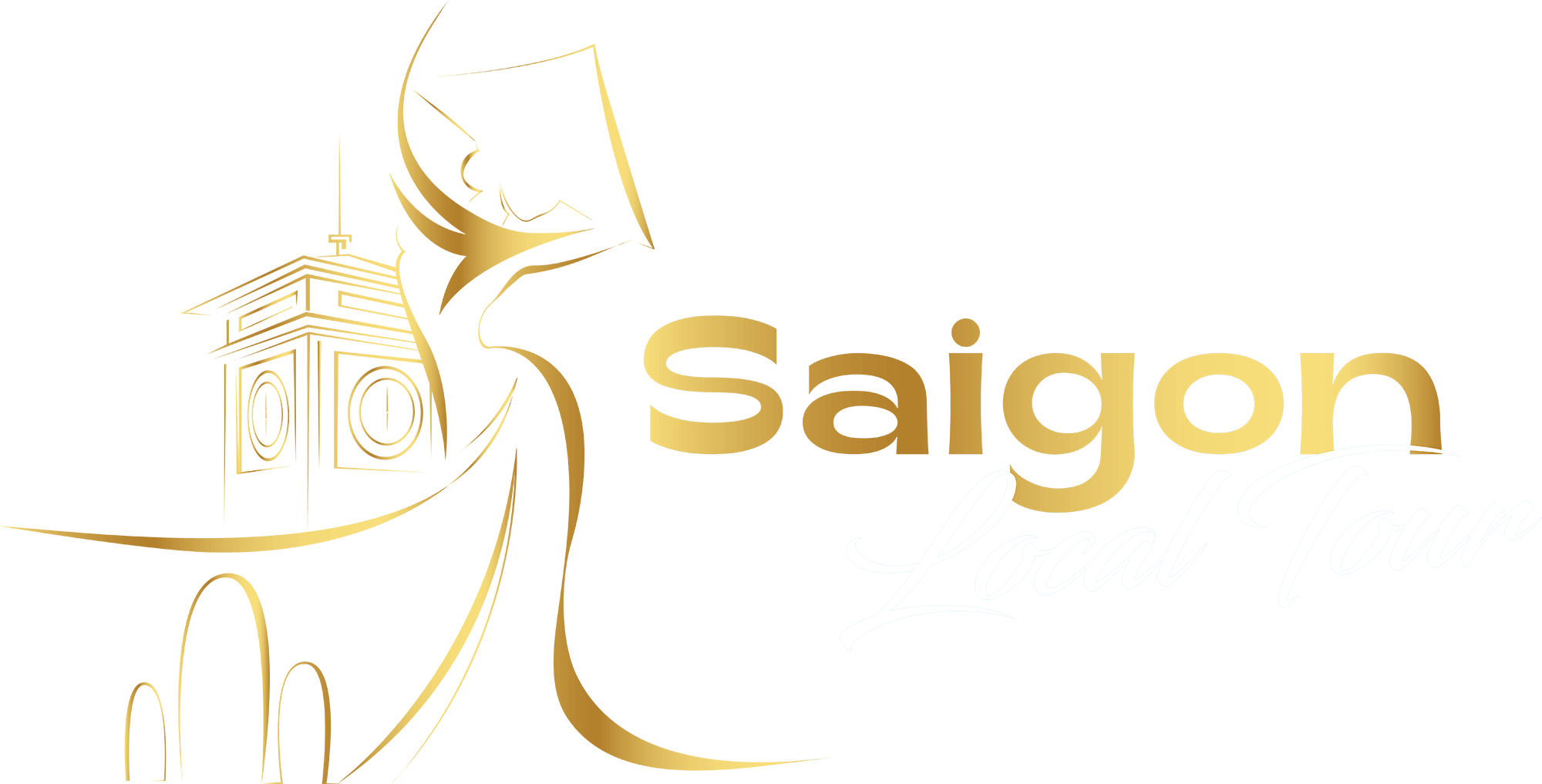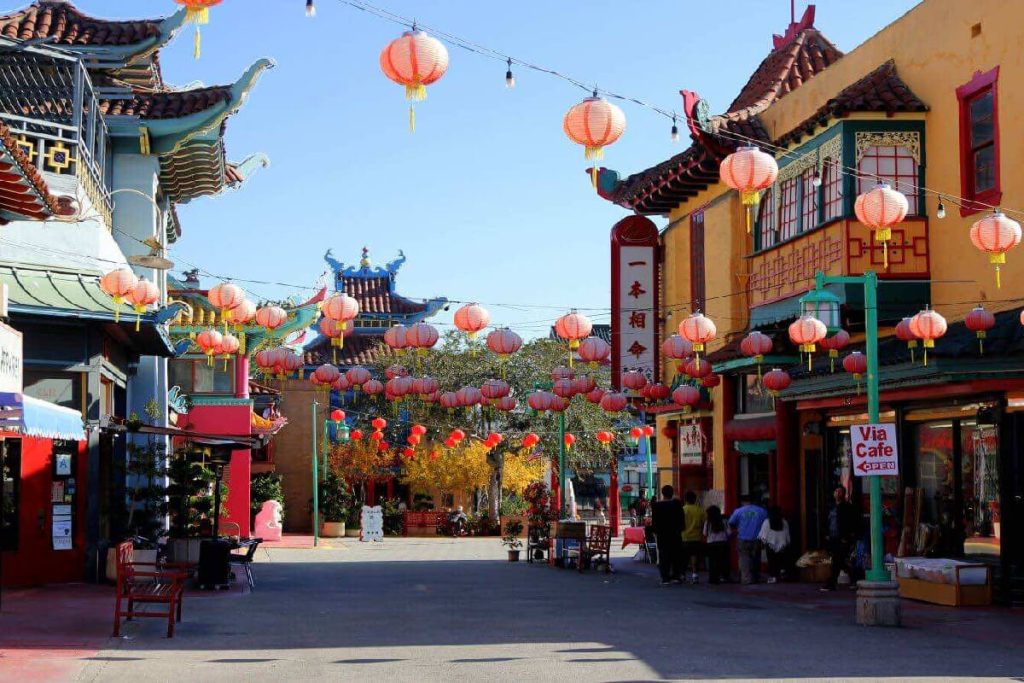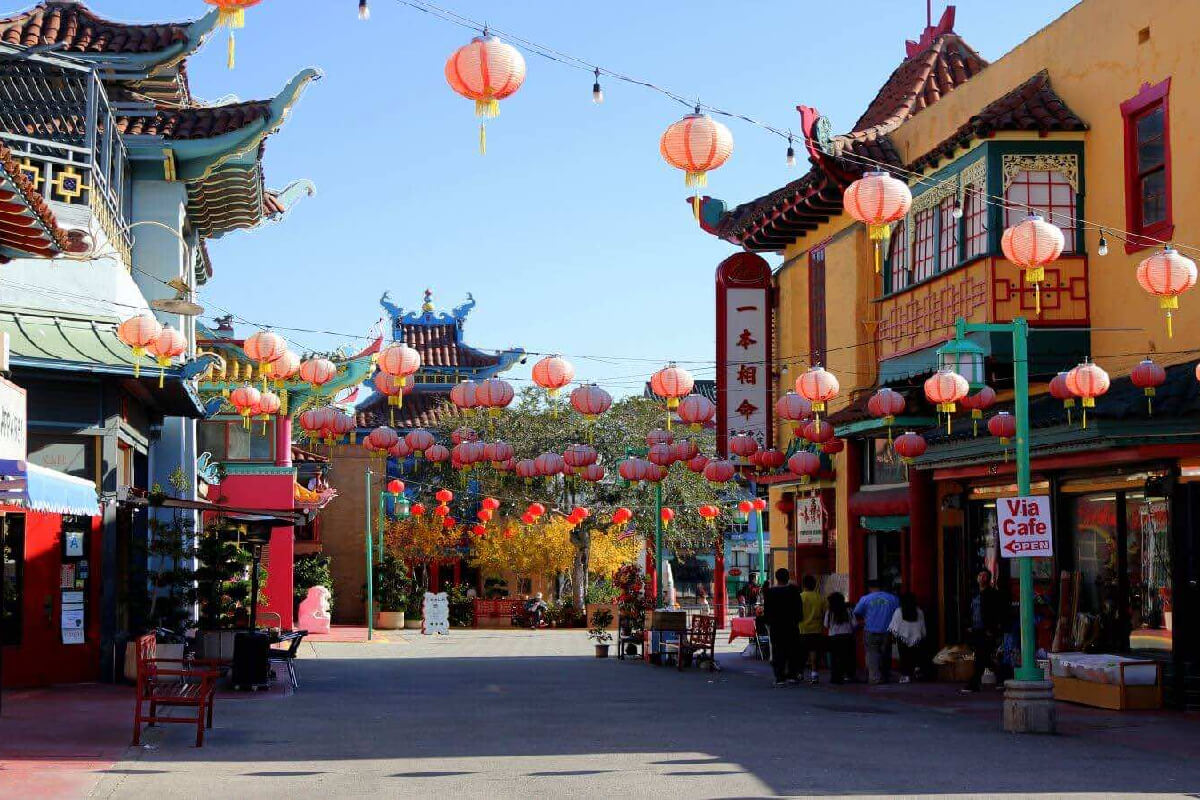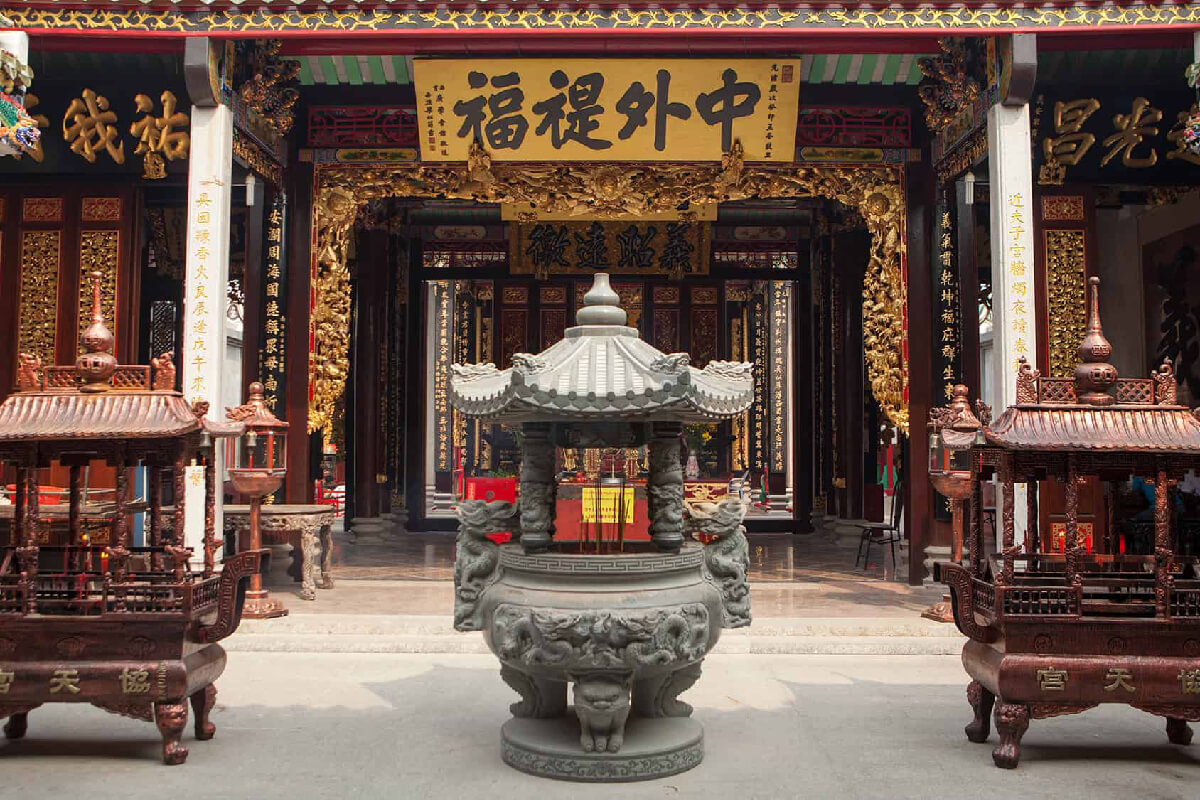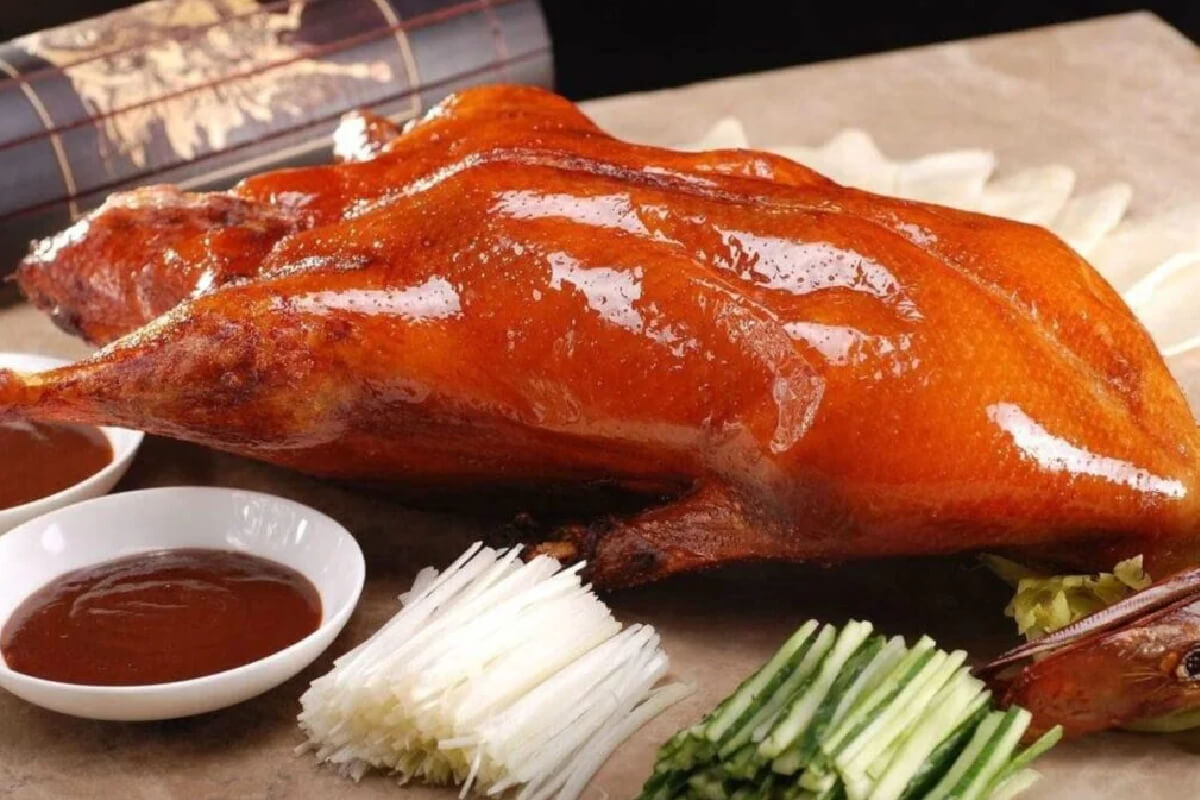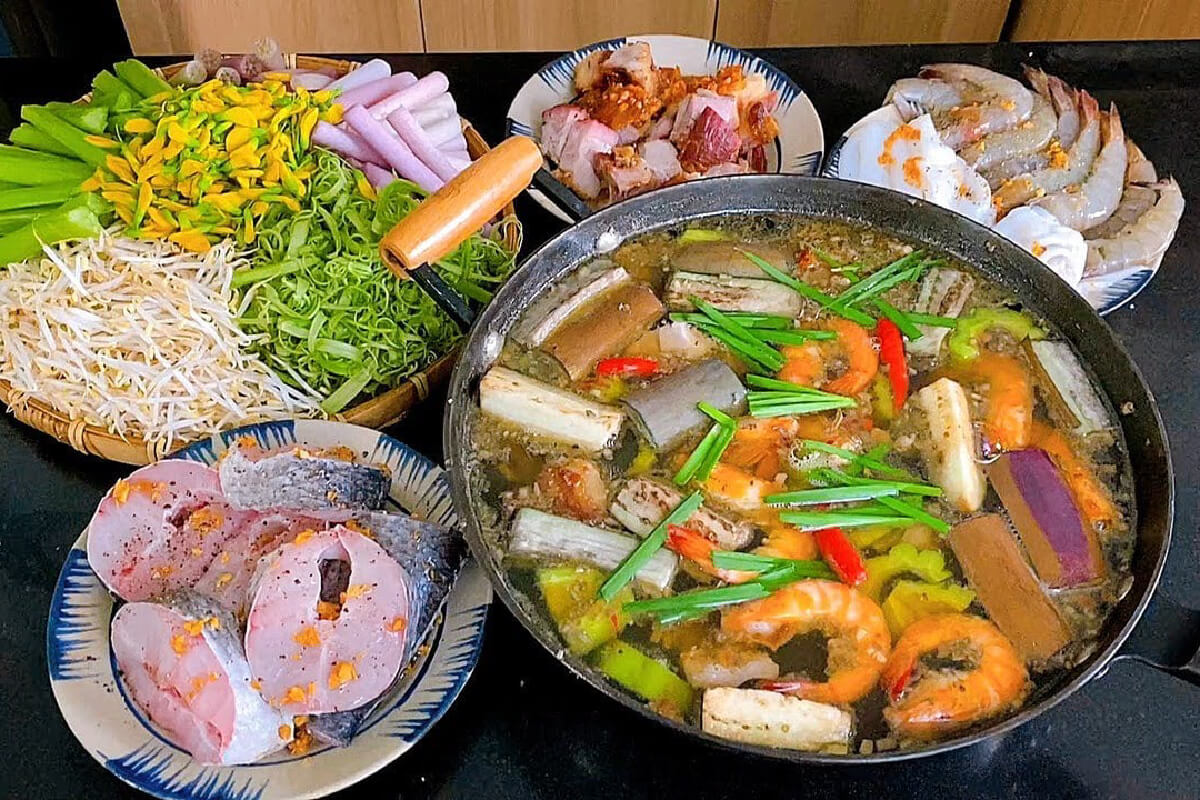District 5 in Ho Chi Minh City, also known as Chinatown or Chợ Lớn, is a vibrant neighborhood that offers a unique blend of Chinese culture, history, and cuisine. A hub for Chinese immigrants since the 18th century, District 5 has become a must-visit destination for those looking to explore Saigon's diverse culture. We’ll explore the fascinating history, Chinese cultural landmarks, and famous cuisine delights of this historic area.
Introduction to District 5 (China Town) in Sai Gon
The history of China Town in Saigon
The term Chinatown is recognized worldwide, referring to vibrant neighborhoods established by Chinese immigrants in countries like the United States, Singapore, Thailand,... These districts are more than just residential areas—they serve as hubs of culture, commerce, and community. Rooted in a strong spirit of solidarity, Chinese communities abroad often create Chinatowns to provide a sense of home, enabling immigrants to trade, conduct business, connect socially, and maintain their cultural and spiritual practices. In Vietnam, Ho Chi Minh City is home to one of the most captivating Chinatowns in Southeast Asia. Located in District 5, this area, often referred to as Saigon Chinatown or Chợ Lớn, has a rich history of the Chinese communities that settled here.
Chợ Lớn, which means to "Big Market," has a history that stretches back to the 18th century. It began as a settlement for Chinese traders during the 18th century. - These immigrants brought with them a rich cultural heritage, vibrant traditions, and entrepreneurial spirit, laying the foundation for what would become one of the most dynamic districts in Saigon.
Initially, Chợ Lớn thrived as a commercial hub, with bustling streets filled with shops, marketplaces, and trading posts. The area quickly developed its unique identity, blending Chinese cultural influences with local Vietnamese traditions. Over time, it evolved into a multicultural melting pot, where Chinese architecture, cuisine, and festivals exist harmoniously alongside Vietnamese culture.
This unique combination of historical richness, vibrant culture, and economic activity makes Saigon’s Chinatown a must-visit destination for both locals and international tourists. Whether you're seeking authentic Chinese cuisine, a deep dive into cultural heritage, or simply a lively atmosphere, Chợ Lớn offers an unforgettable experience.
How to reach ChinaTown
Chợ Lớn, Saigon's Chinatown, primarily spans District 5 but extends into parts of District 6, as well as portions of Districts 10 and 11. Positioned on the west bank of the Saigon River, this vibrant area lies about 5.4 km southwest of Ben Thanh Market, making it a short trip from the heart of Ho Chi Minh City.
There are multiple transportation options for reaching Chợ Lớn, depending on your budget and preference. Motorbike taxis, widely available throughout Ho Chi Minh City, are one of the most efficient ways to navigate the narrow alleys and bustling streets of Chợ Lớn. Services like GrabBike/ GrabCar offer convenient, app-based booking for travelers who want quick and cost-effective transport. Furthermore, several bus routes, including route 1, 11, and 56, pass through or near District 5. While buses are the most economical option, they are less practical for navigating the narrower areas of Chợ Lớn.
Another options for you if you’re staying nearby, renting a bicycle or walking is a great way to explore Chợ Lớn at your own pace. This approach allows you to take in the intricate details of its historic architecture and bustling markets.
Explore the Chinese Culture & Famous Attraction in District 5
Thien Hau Pagoda
Address: 710 Đ. Nguyễn Trãi, Phường 11, Quận 5
Vietnamese Name: Chùa Bà Thiên Hậu
Opening Hours: 6:30 AM - 16:30 PM
Located in the heart of District 5’s Chinatown, Thien Hau Temple is one of the oldest and most iconic religious sites in Ho Chi Minh City. Established in 1760, this temple is dedicated to Thien Hau, the Chinese sea goddess revered as the protector of seafarers. It stands as a stunning testament to Chinese architecture and cultural heritage, drawing both worshippers and tourists alike.
Thien Hau Temple is a masterpiece of traditional Chinese design, offering a feast for the eyes with its intricate details and vivid colors. The temple's bright red-tiled roofs are adorned with dragon motifs, while ancient wooden pillars and carved stone statues lend a sense of grandeur. The entrance features dazzling lanterns and vibrant wall panels that depict mythical creatures and Chinese folklore.
Inside, the temple showcases wooden carvings and paintings that narrate the legends and miracles of Thien Hau. The main altar is dedicated to the sea goddess, surrounded by offerings from worshippers seeking blessings of peace, luck, and safety.
Thien Hau Temple serves as a vital spiritual hub for the local Chinese community. Worshippers gather here to light incense, offer prayers, and seek guidance for their destinies. The temple is especially vibrant during Lunar New Year and Mid-Autumn Festival, with elaborate ceremonies and traditional performances. Additionally, the temple has become a favorite spot for photography enthusiasts and young visitors, thanks to its vibrant decor and picturesque corners. The intricate details and serene ambiance make it a perfect backdrop for capturing moments of cultural beauty.
Tam Son Assembly Hall
Address: 118 Triệu Quang Phục, Phường 11, Quận 5
Vietnamese Name: Chùa – Hội quán Tam Sơn
Opening Hours: 6:00 AM - 10:00 PM
Nestled in the bustling streets of District 5, Tam Son Assembly Hall is a vital cultural and spiritual center for the Fujian (Phuc Chau) Chinese community in Ho Chi Minh City. Established in 1839, this assembly hall serves as a place of worship, community gatherings, and cultural preservation.
Tam Son Assembly Hall plays an integral role in preserving the beliefs and practices of the Fujian Chinese community. The hall is dedicated to ancestor and deity worship, with locals visiting to seek blessings for peace, fortune, and family harmony. Worshippers often offer incense and prayers to deities and ancestors as a symbol of respect and gratitude. During major festivals such as Lunar New Year or Mid-Autumn Festival, the hall comes alive with vibrant decorations and performances, including traditional lion dances and music. These events are a spectacular showcase of Chinese heritage in Saigon. Beyond its religious purpose, Tam Son Assembly Hall serves as a meeting place where members of the Fujian community gather to discuss traditions, share stories, and pass down their cultural values to younger generations.
Nhi Phu Temple
Address: 264 Hải Thượng Lãn Ông, Phường 14, Quận 5
Vietnamese Name: Chùa Ông Bổn – Nhị Phủ Miếu
Opening Hour: 8:00 AM - 4:00 PM
Nhi Phu Temple was established by Chinese immigrants from Quan Chau and Chuong Chau in Fujian province who settled in the Chợ Lớn area at the end of the 17th century. These settlers built the temple as a place to honor their heritage, worship deities, and stay connected to their cultural roots. The temple is dedicated to Ong Bon, a revered deity believed to protect the land and people. Ong Bon is considered a guardian spirit who brings peace, prosperity, and harmony to the community, making the pagoda an essential spiritual hub for generations.
The temple comes alive during major celebrations, particularly on two important days: The Full Moon of the First Lunar Month (believed to be Ong Bon’s birthday) and The Full Moon of the Eighth Lunar Month (Ong Bon’s death anniversary). These occasions feature grand rituals, offerings, and cultural performances, drawing locals and visitors alike. Worshippers come to seek blessings, offer prayers, and partake in the vibrant community spirit that defines these festivals.
Nhi Phu Temple offers visitors a chance to explore a unique blend of spiritual devotion and cultural artistry. As one of the oldest temples in Saigon, it preserves the Fujian Chinese traditions that have shaped the identity of the Chợ Lớn area. From its porcelain-clad dragons to carved wooden details, the temple is the ideal attraction for history and art enthusiasts.
Luong Nhu Hoc Lantern Street
Address: Luong Nhu Hoc Street, District 5, Ho Chi Minh City.
Vietnamese Name: Phố lồng đèn Lương Nhữ Ngọc
Luong Nhu Hoc Lantern Street is a highlight of District 5's Chinatown, celebrated for its vibrant display of colorful lanterns in various shapes and patterns. With a history spanning over half a century, this street has become a cultural emblem, especially during the Mid-Autumn Festival, when the area comes alive with lights, laughter, and festive energy. From the 1st to the 15th day of the eighth lunar month, the street is a hub of activity, drawing locals and tourists alike to enjoy the beautifully crafted lanterns that range from traditional designs to modern creations featuring landscapes, dragons motifs.
Beyond its visual appeal, Luong Nhu Hoc Lantern Street is also a culinary haven, offering Chinese-inspired dishes at budget-friendly prices. Must-try items include steamed buns, dim sum, and fish hotpot, which reflect the rich and diverse flavors of Chinatown’s cuisine. This combination of vibrant culture, visuals, and delicious food makes Luong Nhu Hoc Lantern Street an essential stop for anyone visiting District 5.
Binh Tay Market
Address: 57A Thap Muoi Street, Ward 2, District 6, Ho Chi Minh City
Vietnamese name: Chợ Bình Tây
Binh Tay Market is a bustling, vibrant hub that encapsulates the lively spirit of Ho Chi Minh City's Chinatown. Established in the late 19th century, the market stands out not only for its extensive array of goods but also for its unique architecture that beautifully blends Chinese and French influences.
Binh Tay Market is a favorable attraction for shoppers, offering a wide variety of products. From fresh produce and seafood to clothing, souvenirs, and household goods, the market has something for everyone. Moreover, Binh Tay Market is also a heaven for culinary lovers. The food stalls scattered throughout the market offer an array of traditional Vietnamese and Chinese street food dishes, including savory pho, flavorful banh mi, and delectable sticky rice cakes
Top Must-try Chinese Food in ChinaTown District 5
Dimsum
Dim sum is a staple in Chinese cuisine and a must-try when visiting Chinatown. Traditionally served as a breakfast or brunch item, dim sum consists of a variety of small, bite-sized dishes that are steamed, fried, or baked.
Har Gow (Shrimp Dumplings): These translucent dumplings are filled with plump shrimp, offering a chewy and juicy bite.
Siu Mai (Pork and Shrimp Dumplings): Topped with a touch of roe, siu mai is savory, flavorful, and a crowd favorite.
Char Siu Bao (BBQ Pork Buns): Fluffy and slightly sweet, these buns are stuffed with smoky-sweet BBQ pork.
Egg Custard Tarts: A flaky pastry shell filled with silky custard—perfect for dessert.
You can enjoy dim sum at well-known spots like Tien Phat Dim Sum Restaurant or Baoz Dimsum, both offering an authentic selection of dim sum dishes in a traditional teahouse setting. With affordable prices ranging from 20,000 to 50,000 VND per dim sum item, the restaurant is open from 7 AM to 10 PM, ready to welcome you to enjoy these unique and delicious dim sum.
Traditional Chinese Roasted Duck
Historically, roast duck was a delicacy reserved for the elite, including royalty, due to the intricate and labor-intensive methods required to prepare it. The preparation of roast duck involves a sophisticated process to ensure the perfect balance of crispy skin and tender meat. The crispy skin is a hallmark of a great roast duck, achieving a golden-brown color that gleams with a glossy finish, tempting anyone who catches a glimpse.
The meat itself must be succulent and tender, offering a contrast to the crunchiness of the skin, with each bite being filled with rich flavors. The duck is often seasoned with a blend of star anise, five-spice powder, and other aromatic ingredients, which infuse the meat with a unique and fragrant taste that sets it apart from other roasted meats.
For anyone visiting Chinatown, trying roast duck on Bui Huu Nghia Street is a must. Whether you’re savoring the crispy skin or enjoying the tender, flavorful meat, this dish represents the perfect marriage of tradition, craftsmanship, and rich cultural heritage.
Chicken Rice
Though it may appear simple, Chinese-style chicken rice is a dish that perfectly showcases the art of balancing delicate flavors. The rice is cooked in rich chicken broth infused with the aromatic essence of garlic and ginger, absorbing the flavors to create a fragrant, savory base. The chicken, typically poached to retain its natural juices and tenderness, is served either chopped or shredded, often garnished with fresh spring onions. This comforting dish is accompanied by several dipping sauces, including chili sauce, soy sauce, and ginger-scallion oil, which enhance the flavors and add a delightful kick.
In Chinatown, there are several restaurants that specialize in this dish, but one standout is Dong Nguyen ChinaTown Chicken Rice. Known for its expertly prepared chicken and fragrant rice, the restaurant also serves a tangy chili sauce that adds the perfect spice to the meal, making it a must-try for anyone visiting the area. The dish is reasonably priced, with servings ranging from 50,000 to 100,000 VND, making it an affordable yet satisfying option.
Fish Hot Pot
Fish hot pot is a quintessential communal dish, perfect for family gatherings, celebrations, or enjoying with friends. This dish features fresh fish, such as snakehead or tilapia, simmered in a rich and aromatic broth, which is typically infused with a variety of ingredients like vegetables, tofu, and noodles. The beauty of fish hot pot lies in its versatility—the broth can be mild and herbal for a soothing experience, or it can be spicy and sour, depending on your personal preference. The fresh fish adds a delicate, natural sweetness to the dish, making it both comforting and flavorful.
Typically, fish hot pot is served with a range of dipping sauces, from soy-based sauces to spicy chili pastes, allowing you to customize the flavor profile to your liking. This dish’s communal nature makes it ideal for group dining, where everyone can share in the experience of preparing and enjoying the hot pot together.
In District 5, many eateries offer fish hot pot, but Dan Ich Fish Hot Pot is a local favorite. Known for its flavorful broths and fresh, high-quality ingredients, this restaurant is the perfect spot for those looking to enjoy a hearty and flavorful meal with family or friends. A typical hot pot serving costs between 50,000 to 110,000 VND, offering great value for the amount of food and flavor it delivers.
Sweet Soup Dessert
Located in the heart of District 5, Che Hoa - Ha Ky Dessert Shop offers an authentic Chinese dessert experience that transports you straight to the vibrant streets of China. The shop specializes in a variety of traditional Chinese sweet soups (che), such as white fungus soup, egg dessert, Ginkgo nut dessert, and refreshing herbal jelly. These desserts are prepared in the classic Chinese style, light, and not overly sweet, making them the perfect end to a meal or a delightful afternoon. The flavors are subtle yet satisfying, with each dessert offering a unique balance of textures and refreshing tastes that appeal to a wide range of palates. The desserts are affordably priced, with bowls ranging from 15,000 to 33,000 VND, offering great value for the refreshing and sweet treats served.
